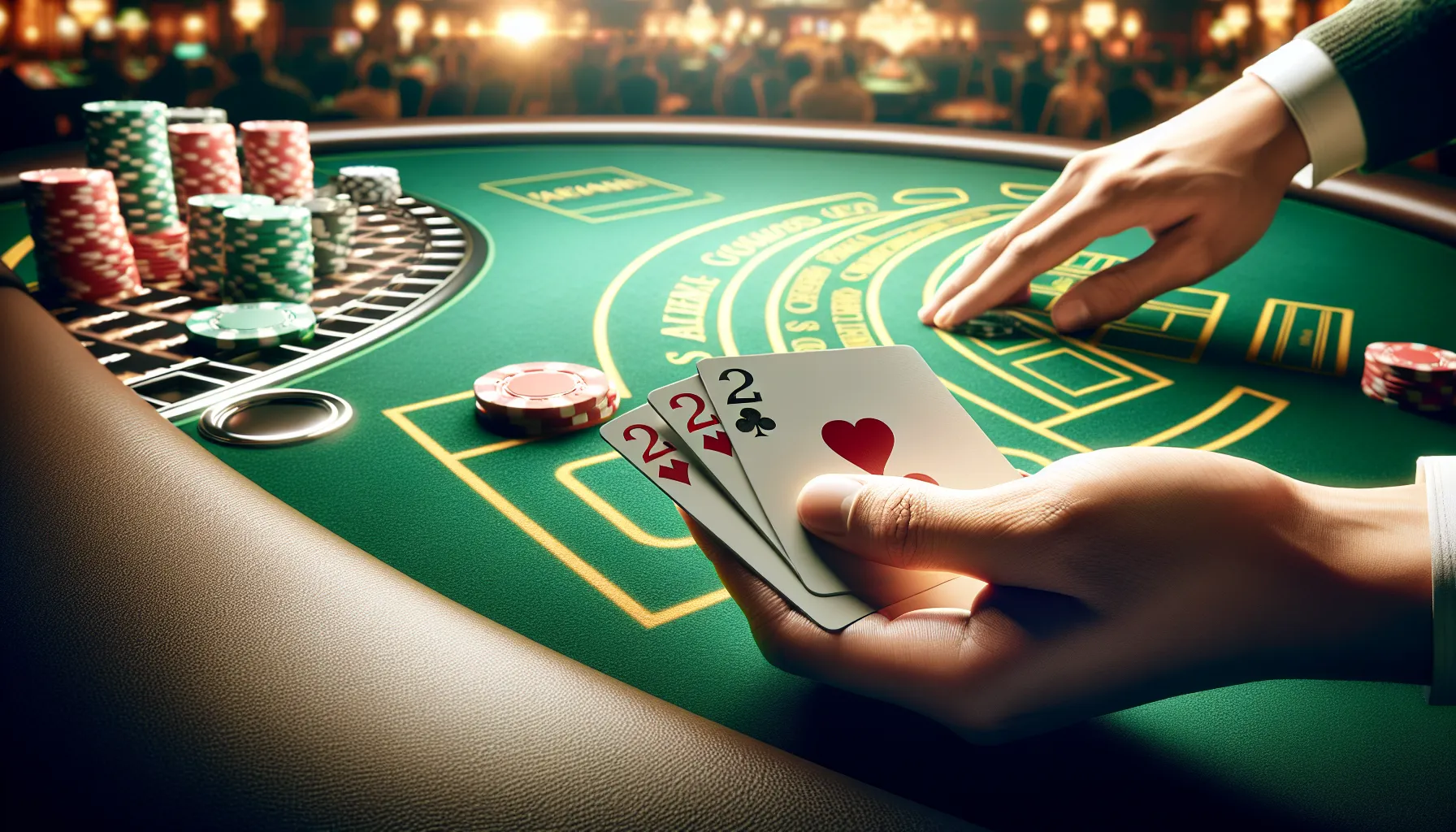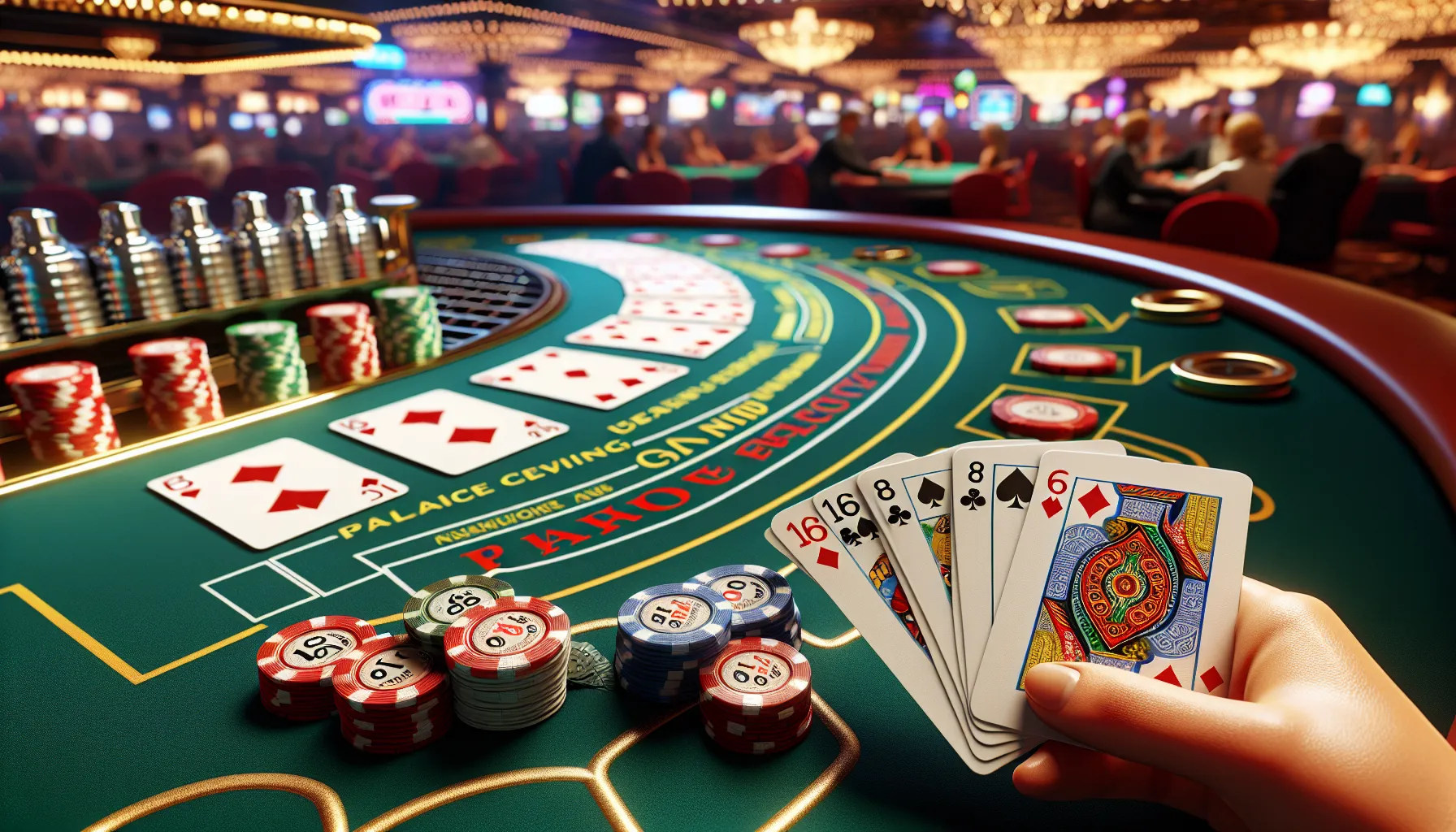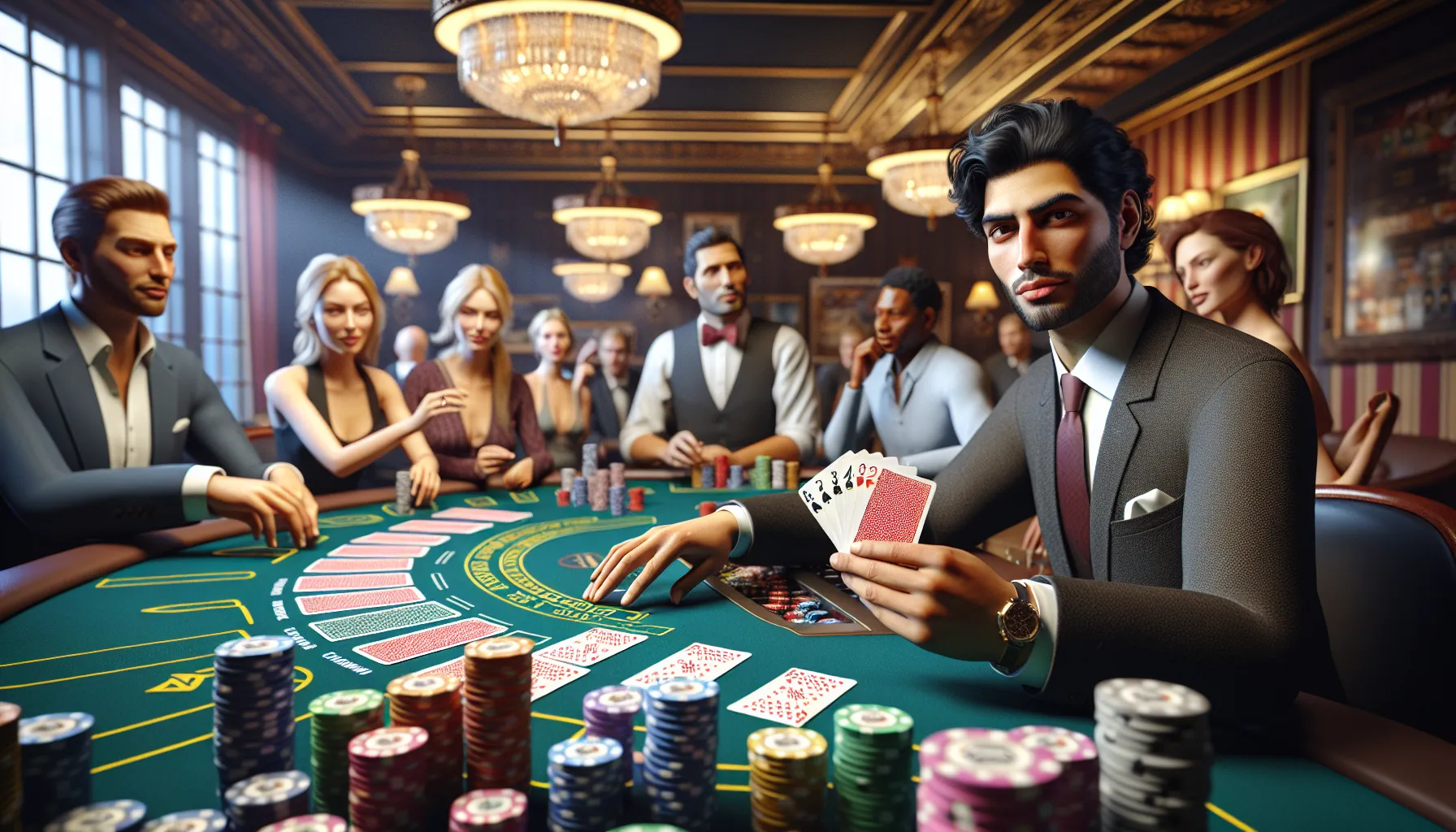Key Takeaways
- Blackjack strategy hinges on understanding the risks and decisions associated with various hands, particularly the challenging ones.
- A hard 16 (e.g., a 10 and a 6) is often considered the worst hand due to its low flexibility and high risk of busting.
- Hands lacking an Ace or with limited improvement options, such as low totals or paired mid-value cards, also pose significant challenges.
- Strategic decisions like knowing when to hit, stand, or split can help mitigate losses with poor hands.
- Recognizing and adapting to weak hands improves decision-making, reduces mistakes, and enhances overall blackjack gameplay.
- Understanding how to handle the worst hands encourages calmness during difficult situations and helps refine long-term strategies.
Blackjack is one of those games that’s as much about strategy as it is about luck. Every flip of the card brings a mix of excitement and anticipation, but let’s face it—not all hands are created equal. While we all dream of hitting that perfect 21, there are some hands that make you groan the moment they land.
I’ve always found it fascinating how certain card combinations can feel like a guaranteed uphill battle. Some hands just seem cursed, leaving you stuck between bad options no matter what you do. So, what exactly is the worst hand in blackjack? Let’s dive into the one hand that can make even the most confident player second-guess their moves.
Understanding Blackjack Basics
Blackjack combines skill and probability, making it a favorite among casino games. To appreciate the challenges of the game, it’s key to grasp its fundamentals.
Objectives Of The Game
The main objective in blackjack is to beat the dealer’s hand without exceeding 21. Players aim to achieve this by drawing cards and strategically deciding when to hit, stand, or take other available actions. A natural blackjack, a hand totaling 21 with the first two cards (Ace and 10-value card), is the most advantageous. If the dealer also has 21, the round results in a push, with no winner.
Importance Of Hand Values
Hand values are central to blackjack strategy. Aces count as either 1 or 11, while face cards (Kings, Queens, Jacks) and 10s carry a value of 10. All other cards retain their numeric values. Understanding these values aids in calculating totals and determining the risks of drawing additional cards. For example, a hand totaling 16 presents a higher bust risk if another card is taken, making it among the trickiest positions players face.
Defining The Worst Hand In Blackjack

In blackjack, not all hands offer equal chances for success. Some starting hands place players in tricky situations, increasing the probability of losing against the dealer.
Characteristics Of A Bad Starting Hand
A bad starting hand combines a total value with limited flexibility for improvement. For example, totals like 16 often create dilemmas. A 16 is challenging because hitting risks exceeding 21, while standing keeps you vulnerable to the dealer’s stronger hands. A hand composed of a 10 and a 6 or a 9 and a 7 also highlights this problem.
Another characteristic is the absence of an Ace, which reduces adaptability. Aces can shift between 1 or 11, offering more ways to manage risk, so their absence limits options. Paired cards with inflexible values, such as two 8s, form another poor combination as neither creates an optimal total without splitting.
Why Certain Hands Are Risky
Certain hands are risky due to their higher likelihood of busting or losing to the dealer. A hard 16 (e.g., 10 and 6) provides little room for error, as drawing nearly any card valued at 6 or above will cause a bust. This hand is especially troublesome when facing a dealer’s strong upcard, like a 10 or Ace.
Hands with low totals, such as a 12, are also risky as they lack the strength to beat most dealer outcomes without risking a bust by drawing. Additionally, paired cards like 8s, when not split, can result in a weak total of 16, leaving the player in a precarious position when deciding their next move.
Examples Of The Worst Hand In Blackjack

Some hands in blackjack present more challenges than others, making them the least desirable for players. These hands limit strategic options, increasing the chances of busting or losing to the dealer.
Hard 16: A Closer Look
A hard 16, composed of cards like a 10 and a 6 or an 8 and an 8, is widely considered one of the worst hands. This hand forces a difficult decision. Hitting risks busting with any card valued at 6 or higher, while standing leaves the hand vulnerable to the dealer surpassing 16. Without an Ace to adjust the total, this hand offers limited flexibility. Splitting a pair of 8s provides some improvement potential, but paired low-value cards aren’t always split-friendly based on the dealer’s visible card.
Other Weak Hands To Consider
Low totals, such as 12 or 13, often lead to risky outcomes. The chances of drawing a 10 or face card are high, making a bust more likely. A soft 17, one that includes an Ace counting as 11, carries its own risks. While the soft total offers flexibility, this hand struggles to compete with stronger dealer hands. Paired cards like two 7s can also be problematic. Splitting helps in certain scenarios, but the resulting hands often don’t provide significant improvement.
Strategies For Playing The Worst Hands

Managing bad hands in blackjack requires a blend of calculated decisions and strategic adjustments. I focus on making the best possible moves to reduce losses and improve my chances of overcoming unfavorable situations.
Knowing When To Hit Or Stand
Recognizing the right moment to hit or stand can greatly impact how bad hands play out. When holding a hard 16, I usually consider the dealer’s upcard. Against a 7 or higher, I often hit to reduce the dealer’s advantage, though this increases my risk of busting. If the dealer shows a 2 through 6, I typically stand, expecting the dealer to bust. For soft hands like a soft 17, I often hit since the Ace’s flexibility minimizes the risk of busting. Sticking to these guidelines helps maintain focus during tricky scenarios.
Avoiding Common Mistakes
Avoiding errors is crucial when dealing with poor blackjack hands. I never split 10s since it downgrades a strong hand into two weaker ones. Similarly, I don’t stand on low totals like 12 or 13 when the dealer shows a strong card. Overvaluing marginal hands or forgetting the dealer’s upcard often leads to losing rounds. Keeping these pitfalls in mind helps me avoid unnecessary risks.
Leveraging Card Counting Techniques
Using card counting can guide decisions with bad hands by understanding the deck composition. When more low-value cards remain, I adjust my strategy by being more conservative. I may hit less often with a hard 16 or stand more frequently with low totals, knowing the dealer is less likely to draw high cards. Although card counting doesn’t guarantee wins, it provides additional insight to handle challenging hands.
Why Understanding The Worst Hand Matters
Recognizing the worst hand in blackjack helps me make better strategic choices. It limits costly mistakes and enhances my ability to adapt during gameplay.
Impact On Decision-Making
When I know how to identify weak hands, I can focus on making logical decisions. A hard 16, for example, forces me to decide whether to hit or stand, depending on the dealer’s upcard. If the dealer shows a strong card like a 10, I might lean toward hitting, even with the risk of busting, to increase my chances of not losing outright. Knowing the risks of bad hands helps me weigh factors like the probability of drawing a high card or the potential dealer bust chances.
Understanding these scenarios also prevents me from panicking in tight situations. For instance, when holding a low total like 12, I evaluate the dealer’s position before acting. If their upcard is weak, such as a 4 or 5, I might choose to stand, while against stronger cards, I consider hitting. This kind of informed decision-making improves my odds of making the best out of difficult situations.
Improving Your Overall Gameplay
Studying bad hands has improved my overall gameplay by teaching me how to minimize losses. Refining my strategies for hands like a soft 17 or a hard 16 prepares me to navigate challenging spots effectively. For example, I avoid common errors like splitting 10s or making uncalculated hits. Instead, I focus on strategies to reduce the house edge.
This knowledge also encourages me to remain calm during losing streaks. Bad hands aren’t uncommon in blackjack, so I trust my preparation to guide my actions. Practicing how to handle tough scenarios like splitting a pair of 8s against a strong dealer card bolsters confidence and sharpens my skills.
Conclusion
Blackjack is as much about strategy as it is about luck, and understanding the challenges of tough hands can make all the difference. While hands like a hard 16 or a soft 17 may seem frustrating, they’re also opportunities to sharpen your decision-making skills.
I’ve found that staying calm and focused, even with the worst hands, can turn a tough game into a rewarding learning experience. With practice and preparation, it’s possible to navigate these tricky situations and improve your overall gameplay.
Frequently Asked Questions
What is the worst hand in blackjack?
The worst hand in blackjack is often considered a hard 16, such as a combination of a 10 and a 6 or two 8s. This hand is challenging because hitting risks busting, while standing leaves you vulnerable to the dealer beating your total.
Why is a hard 16 difficult to play?
A hard 16 is difficult because it’s below 17 but too close to 21, making it more likely to lose either by busting or by the dealer achieving a better hand. Strategic decisions are crucial for managing this hand.
What are other weak hands in blackjack?
Other weak hands include low totals like 12 or 13 and a soft 17 (an Ace valued as 11 with a 6). These hands offer limited flexibility and carry high risks of losing against the dealer’s stronger cards.
Should you always hit on a hard 16?
Not always. Hitting on a hard 16 should depend on the dealer’s upcard. If the dealer shows a strong card like a 10, hitting might be better. Against weaker upcards, players may choose to stand.
Can splitting two 8s improve your chances?
Yes, splitting two 8s is generally advised, as it gives players a better chance to form stronger individual hands instead of being stuck with a hard 16, which is one of the worst starting hands.
How can I reduce losses with bad hands in blackjack?
To reduce losses, make calculated decisions by analyzing the dealer’s upcard. Learn basic blackjack strategy, avoid risky moves like splitting 10s, and consider card counting to improve your odds.
Is card counting helpful with bad hands?
Yes, card counting can help you assess the deck’s composition and adjust your strategy when holding a bad hand. However, it requires skill, practice, and doesn’t guarantee a win.
Why is understanding weak hands important in blackjack?
Understanding weak hands helps players make smarter decisions, minimize mistakes, and improve gameplay. Recognizing when to hit, stand, or split ensures informed choices and reduces the house edge.
What should I avoid doing with a hard 16?
Avoid standing against a strong dealer card like a 10 or Ace, as this reduces your chances of winning. Also, don’t surrender your hand unless the rules allow and it’s strategically justified.
Can practice help with bad hands in blackjack?
Absolutely! Practicing blackjack strategies enhances decision-making, helps you stay calm in tricky situations, and prepares you for managing bad hands effectively during actual gameplay.



